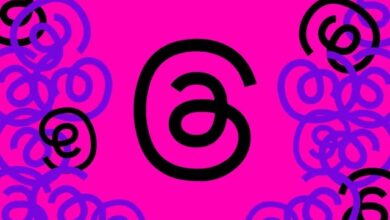Giza Raises $3 Million to Bridge the Gap Between Artificial Intelligence and Blockchain

Artificial intelligence (A.I.) and blockchain technologies have been at the forefront of technological advancements, each with their own potential for transformative impact. Giza, a recently established startup, aims to combine these two fields by leveraging the power of A.I. and zero-knowledge proofs to bridge the gap between artificial intelligence and blockchain. In a recent pre-seed funding round led by CoinFund, Giza secured $3 million, propelling the company forward on its mission to make A.I. available to smart contracts and expand their design space.
The Birth of Giza
Giza was founded in October by Cem Dagdelen, Fran Algaba, and Renç Korzay, with the vision of integrating A.I. with blockchain technology. While Algaba, Giza’s CEO, declined to comment on the startup’s implied valuation, the impressive lineup of investors participating in the pre-seed round, including CoinFund, StarkWare, TA Ventures, and Arrington Capital, signifies strong support for the company’s vision.
A.I. and Crypto Funding Trends
The investment in Giza comes at a time when venture capital funding for crypto startups has experienced a decline. Despite the general slowdown in the A.I. gold rush, where VC funding has also been affected, A.I. startups managed to raise approximately $58 billion in the second quarter of 2023, far surpassing the $2.3 billion raised by crypto firms. The performance of A.I.-themed cryptocurrencies outpacing Bitcoin earlier this year reflects the enthusiasm surrounding the potential of A.I. However, as A.I. fever has slightly subsided, the initial price gains have cooled.
The A.I. Expert Turned Crypto Entrepreneur
Fran Algaba, Giza’s CEO, brings a wealth of expertise in the field of A.I., having previously served as the head of machine learning at Banco Bilbao Vizcaya Argentaria, a Spanish multinational bank, and in a similar role at Adidas. While his initial foray into crypto began as a hobby in 2019, Algaba’s involvement intensified as he organized Web3 events in Madrid and Barcelona. It was during these events that he met his co-founders, Dagdelen and Korzay, leading to the formation of Giza.
Bridging A.I. and Blockchain with Zero-Knowledge Proofs
Giza recognizes the limitations of running computationally intensive A.I. models on blockchains such as Ethereum, which are inherently slow and decentralized. To address this challenge, Giza is exploring the potential of zero-knowledge proofs, a cryptographic technique gaining popularity within the Web3 community. By running A.I. models on faster, traditional computers and generating zero-knowledge proofs to validate the computations on a blockchain, Giza aims to make A.I. integration into the blockchain space more feasible.
The Giza Platform: Enabling A.I. Developers
One of the significant hurdles faced by developers in implementing zero-knowledge proofs lies in the complexity of the process. Giza aims to simplify this by developing a platform that allows A.I. developers to easily generate zero-knowledge proofs for their models. With the recent injection of $3 million in funding, Giza plans to release the infrastructure behind their platform in the coming week and aims for a full platform launch by the end of 2023. This user-friendly solution has the potential to empower developers and pave the way for greater integration of A.I. into the blockchain ecosystem.
Read More: Navigating the Three Tiers of AI Risks by Dario Amodei
Conclusion
Giza’s successful pre-seed funding round signals strong investor interest in the convergence of A.I. and blockchain technologies. By leveraging zero-knowledge proofs, Giza aims to unlock new possibilities for smart contracts and enable the seamless integration of A.I. models into blockchain networks. As the company prepares to launch its platform, the future holds promise for the realization of Giza’s vision to bridge the gap between artificial intelligence and the decentralized world of blockchain.

